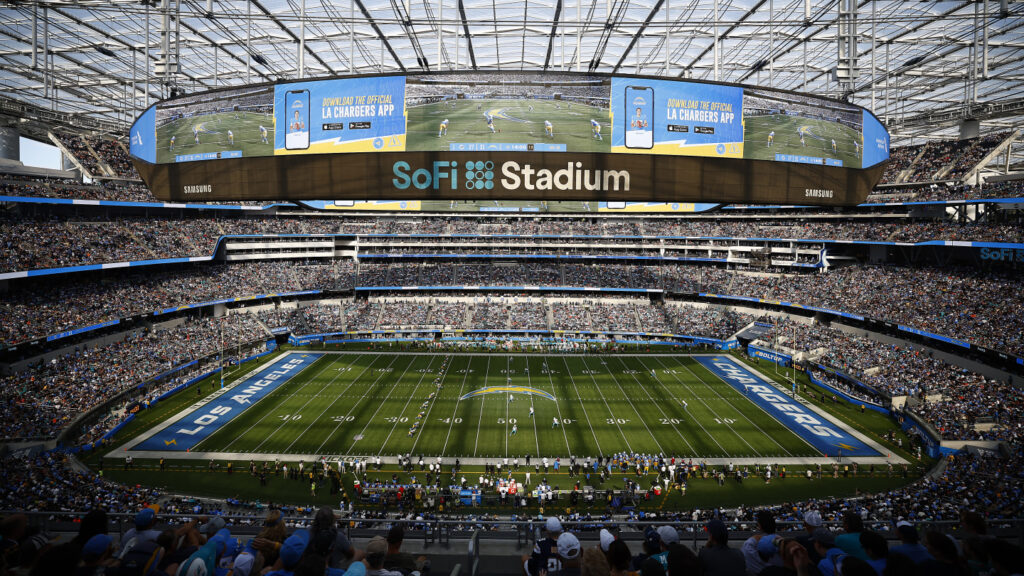The LA Chargers have only played in two cities so far, but there has been much controversy over where the team will play. For a team with deep roots in San Diego, the decision to return to Los Angeles in 2020 was controversial and divided opinion among fans.
The Chargers have played in five different stadiums across the two different cities the franchise is based in. Here are all the places the team has played.
Los Angeles Memorial Coliseum: 1960
As it is today, the stadium the Chargers first played in was shared with the Los Angeles Rams. The Chargers were not popular in Los Angeles at the time because the Rams, who played in the NFL, dominated the market.
So after one disappointing season, then-owner Barron Hilton (yes, the same Hilton as the hotel chain) opted to move the Chargers south to San Diego, while the Rams remained Los Angeles’ only team that continued to draw big crowds at the Coliseum (until the Raiders arrived in 1982).
Balboa Stadium: 1961-1966
The Chargers’ first home in San Diego was none other than Balboa Stadium. The team played at the century-old stadium for six years before moving to their longtime home in San Diego.
The Chargers won the AFL championship in 1963 while playing at Balboa Stadium, their only championship in franchise history.
San Diego Stadium/Jack Murphy Stadium/Qualcomm Stadium: 1967-2017
This entry should be called by all three names given how important each name was over the years. What you call the Chargers’ former San Diego home depends on your age and when you became a fan.
Those who became fans during the Chargers’ early days or before the Air Coryell era would call it San Diego Stadium. Those who became fans during the Air Coryell era, after that era, or during the team’s only Super Bowl appearance would call it Jack Murphy Stadium. Those who became fans during the LaDainian Tomlinson era would call it Qualcomm Stadium.
Either way, this is the most iconic stadium in franchise history, but sadly it no longer exists: The stadium was demolished in late 2020/early 2021 to make way for SDSU’s new, lower-capacity football stadium.
Dignity Health Sports Park: 2017-2019
This was a dark time for Chargers fans. Moving to Los Angeles was already a contentious issue for the franchise, but their decision to play in a football stadium until their new home was completed only made things worse.
This is when opposing fans truly took control of Chargers games. Disgruntled Chargers fans were not willing to pay exorbitant ticket prices to watch a game in a non-football stadium. Visiting fans ruled, and the Chargers gained a (false) reputation for having no fanbase, and former players chimed in.
SoFi Stadium: As of 2020
The Chargers played their first game at SoFi Stadium on September 20, 2020 (Justin Herbert’s first career start). Due to the COVID-19 pandemic, it was an unprecedented first game at the team’s new home stadium with no fans in attendance.
SoFi proved that the kind of takeover of football stadiums by visiting fans that would happen once fans were allowed in was not going to happen — sure, big-city teams could split stadiums 50/50, but the environment at SoFi Stadium was completely different than the team’s original Los Angeles home.
The Chargers were forced to play their home games at Sun Devil Stadium in Arizona during the 2003 season due to the Cedar Fire.
In the fall of 2003, the Cedar Fire burned over 250,000 acres. Unfortunately, the Chargers were unable to win their Monday Night Football home game in Arizona, losing 26-10 to the Miami Dolphins.


